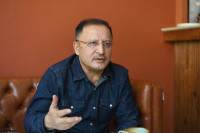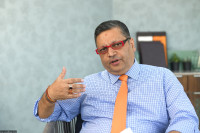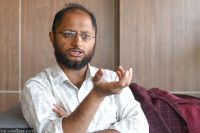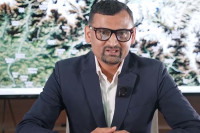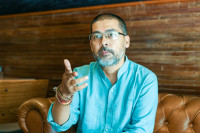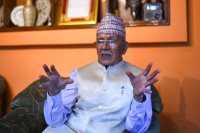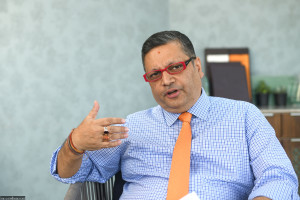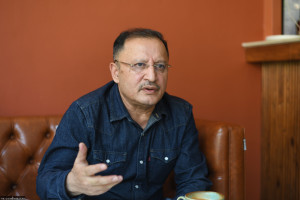Interviews
In the transition phase, the party would be led by a joint leadership
The completion of the provincial and parliamentary elections has resulted in an overwhelming victory for the left alliance.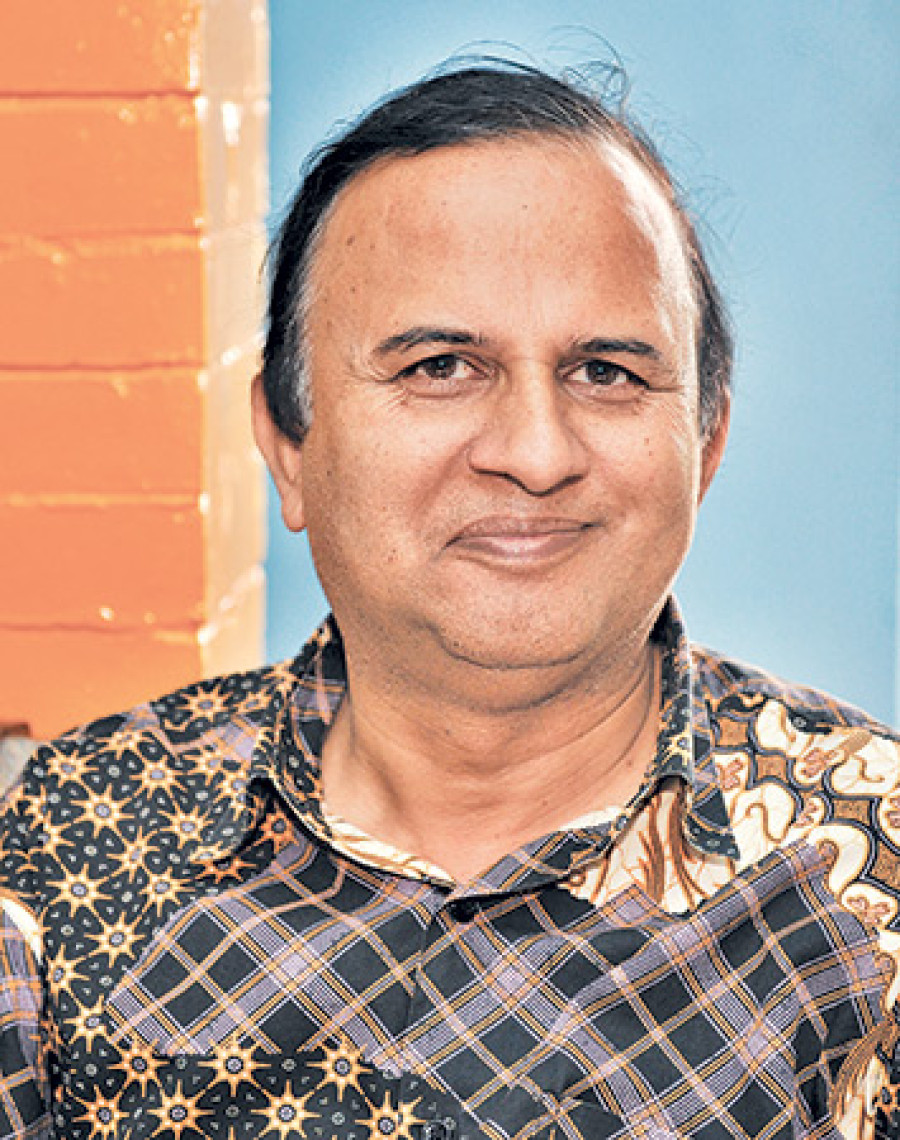
The completion of the provincial and parliamentary elections has resulted in an overwhelming victory for the left alliance. The CPN-UML, in particular, has swept the polls and is set to form governments in six out of seven provinces and also nationally. However, several issues have to be addressed before a new government can be installed. The power-sharing structure following the pending merger between the CPN (Maoist Centre) and the UML, and the disagreements in the election of National Assembly (NA) members have been delaying the inevitable formation of a left-led government. Anil Giri and Tika R Pradhan talked to UML standing committee member, who has been touted to be the first Chief Minister of Province 5, Shanker Pokharel about the unification and the issues regarding the formation of the NA.
How difficult will it be to achieve the proposed unification between the UML and the Maoist Centre (MC)?
Both the UML and the MC competed as allies in the recent elections. So they have already begun to walk along the same path. What’s more, the party leaders have reached an agreement regarding the unification. While there are a number of steps to take before the unification is truly realised, and while some political questions still need to be answered, in essence, I believe that the process of merging the two parties has already begun.
I do not see any major hurdles to achieving unification. The main issue has to do with the structure of the unified party. Now that the party leaders have signed papers agreeing to the unification, the central committees of the UML and the MC have to merge to form a unified internal committee. It is this internal committee that will then decide on the structure and principles of the unified party. Achieving all this may take time, but the process is already in the works.
Some say that the left alliance was borne out a need to make the Maoist Centre larger, and nothing else.
This is just a diversionary tactic and an attempt to play political games to subvert the unification process. The alliance was borne out of the realisation that a unification between the UML and the MC would benefit the people. And the people’s voting trend has proven this to be the right move.
Do you see challenges with power sharing once the UML and the MC are unified?
Our initial priority is to create a formula whereby the two parties, UML and MC can smoothly transition into one unified party. In doing so, agreements will have to be made to accommodate the concerns of leaders from both sides. Initially, leaders from both parties will have to be accommodated in the leadership structure. However, we hope that following unification, a party convention will have to be held. Cadres will then pick the candidates who they feel can further the party in the future instead of voting along old party lines.
What about the ‘gentleman’s agreement’ between Pushpa Kamal Dahal and KP Sharma Oli regarding the posts of Premier and party chief?
I cannot comment on what conversations have occurred between individual politicians. What’s more, I don’t think the two leaders think that it is the right time to report on their conversations, as they are still deciding on the modality of unification. But I can say that there has been no direct contact between the two parties’ committees to discuss this particular matter. I believe that this sharing of the posts of Premier and party chief is not a big issue, particularly given that the larger agreement of party unity has already been reached. What I can say is that the people have made clear their support for Oli. The party will respect this and endorse him as prime minister.
So will Dahal then be the party chief?
In the transition phase, the party would be led by a joint leadership and the party leadership will be decided upon in a joint agreement by the two parties. Following the completion of the process of unification, the convention to be held will be the platform to choose party leadership.
There has been confusion regarding the party structure following unification. Could you lend some clarity to this?
At the top level, leaders are discussing how to adjust and coordinate the leadership in the two parties to form a single, new leadership structure. Now, certain percentage ratios of leaders from both parties are being adjusted in a new unified leadership structure. What we do know is that since the principles are aligned, and the merger has been agreed upon, the ratio will be decided upon at some point in the future.
At the lower levels, it is a different case. Some areas have a strong UML presence, whereas some areas have a strong MC presence. Some areas will have to a have a MC-first formula of integration; the UML will not always be given priority in all regions.
The MC is perceived to be a party with no proper organisational structure. Will this prove problematic in the merger?
The MC seems top-heavy. It can be said that there are less cadres than there are leaders in their party. And cadres are greatly needed in any party. In this spirit, a lot of the low-level MC leaders have to agree to become cadres. And this has to align with the cadre-leader structure maintained by a large party such as the UML.
Do you believe that Oli will make good on his promise of a stable government?
The government will be stable and it will be based on the left alliance. Just because there are questions regarding the leadership, it does not mean that the government will not be stable. If both Oli and Dahal come to a fair agreement, a single, stable government is not hard to achieve. Even if the agreement calls for a leadership change after half a term, the fact that the left alliance will hold on to power lends stability in itself. The party in power will be the same regardless of changes in leadership.
There have recently been issues with the UML’s proposal that the block voting system be adopted in the National Assembly. Why is the UML unilaterally going for this majority system?
This is not about the Maoists or the UML or the NC. It’s about what kind of system governs the process. The way people are talking about it is not correct. Only initially will the UML control the entire block of eight in the National Assembly. In two years, this won’t be the case. A majority situation that cannot occur for too long is being held onto by the NC to pressure the President.
If the current transitional government picks the temporary capital and the temporary governors for provinces, will the left alliance accept their decisions?
It can be said that the transitional government was remiss in their duties because they neglected to pick temporary capitals. If they do so now, on a temporary basis, we will have no issues with their decisions. But if they don’t do so, the new government will. They should have also picked the temporary governors months ago. But now that a new people’s mandate has come in, we have advised them against doing so.
The Minister of Information and Communications has recently said that the current government will only be a caretaker government once it resigns.
I disagree with this statement. When elections have already brought in the people’s wish for a new government, he would be remiss in claiming that the current government will only be a caretaker government once it resigns. The people have clearly voted in favour of new state leadership. The current government cannot try to stay in power as the people have already made their choice clear in terms of political leadership. The current government should have resigned as soon as the results were made clear.




 17.12°C Kathmandu
17.12°C Kathmandu